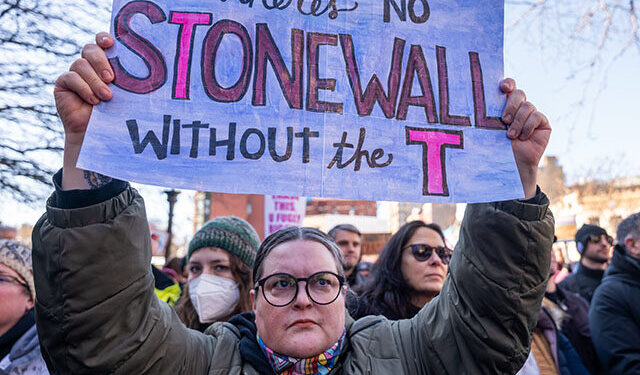Imagine visiting a national monument—one meant to honor a pivotal moment in history—only to find key parts of that story missing. That’s exactly what activists say happened when the U.S. National Park Service (NPS) quietly removed the word “transgender” from the official website for the Stonewall National Monument in Greenwich Village, sparking frustration and backlash.
For many, Stonewall isn’t just a historic site—it’s a symbol of resistance, a place where people stood up against injustice and demanded their right to exist freely. The 1969 Stonewall Uprising was a watershed moment for LGBTQ+ rights, often compared to other defining movements in American history, such as the Seneca Falls Convention for women’s rights in 1848 and the Selma to Montgomery March for Black voting rights in 1965.
But the recent website update has some asking: Is history being rewritten?
What Changed?
According to reports, the NPS website once acknowledged the role of transgender people in the uprising. However, its current description only references lesbian, gay, and bisexual (LGB) individuals, omitting any mention of the transgender community.
The updated page now reads:
“Before the 1960s, almost everything about living openly as a lesbian, gay, or bisexual (LGB) person was illegal. The Stonewall Uprising on June 28, 1969, is a milestone in the quest for LGB civil rights and provided momentum for a movement.”
While the text still honors the importance of Stonewall, critics argue that erasing the mention of transgender individuals distorts the full story—especially since transgender activists were among those leading the fight that night.
The Outrage and Response
Local officials and activists were quick to condemn the change. Erik Bottcher, a New York City council member representing Greenwich Village, called the omission “an attempt to erase the very existence of transgender people.”
New York Governor Kathy Hochul also weighed in, calling the edit “cruel and petty.” In a post on X (formerly Twitter), she wrote:
“Transgender people play a critical role in the fight for LGBTQ+ rights—and New York will never allow their contributions to be erased.”
Among those speaking out is Randy Wicker, a longtime LGBTQ+ activist who was close to Marsha P. Johnson and Sylvia Rivera—two transgender women widely credited as key figures in the Stonewall Uprising. Wicker described the website update as “frightening,” saying it reflects a broader trend of diminishing transgender visibility in public spaces.
A Bigger Conversation on Representation
This debate isn’t just about a website—it taps into larger questions about how history is told and whose voices are included.
For years, many LGBTQ+ advocates have fought to ensure that transgender figures receive the recognition they deserve in the story of Stonewall. While some historians argue that early narratives may have overlooked transgender contributions, others emphasize that activists like Marsha P. Johnson, Sylvia Rivera, and Miss Major Griffin-Gracy were essential in resisting police oppression and helping spark the modern LGBTQ+ rights movement.
The National Park Service has not yet issued a formal response to the backlash. However, this controversy adds fuel to a broader national conversation about LGBTQ+ rights, representation, and the importance of preserving history accurately.
What’s Next?
For now, activists and leaders are pushing for the NPS to restore transgender representation on the Stonewall National Monument website. Whether or not that happens, the uproar has reignited discussions about who gets to shape history—and why it matters.
If you’re interested in learning more about Stonewall and its impact, check out these resources:
- The Stonewall National Monument (Official NPS page)
- The Stonewall Uprising (History.com)
- Marsha P. Johnson and Sylvia Rivera: Pioneers of Pride (NPR)
No matter where you stand on this issue, one thing is clear: history should be told in full—without omissions.




















